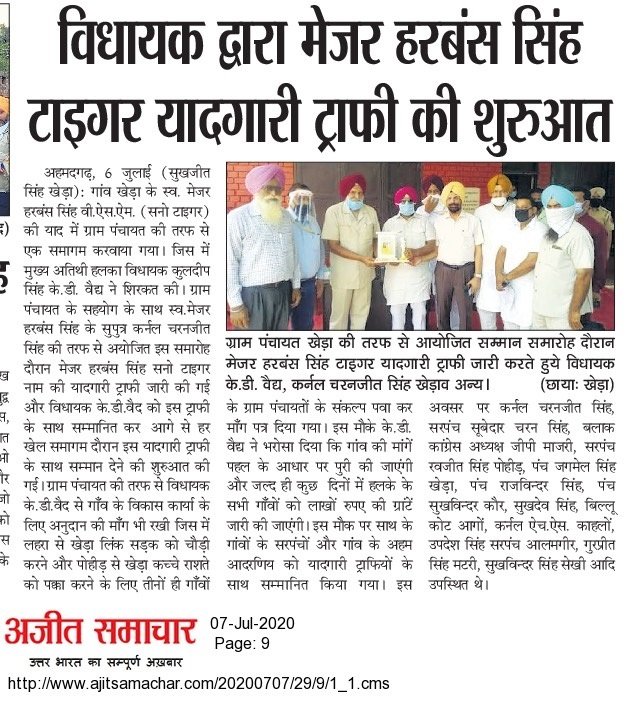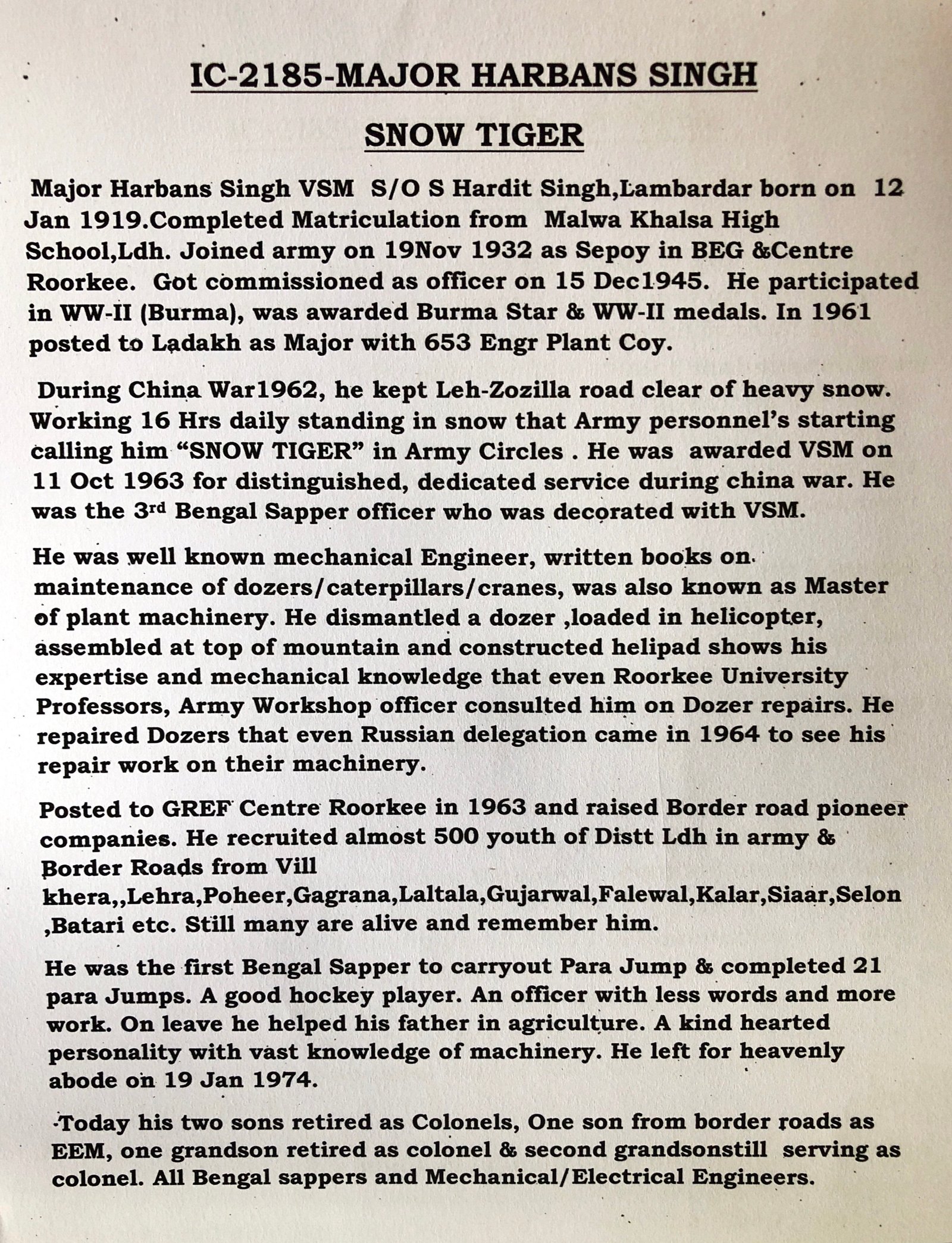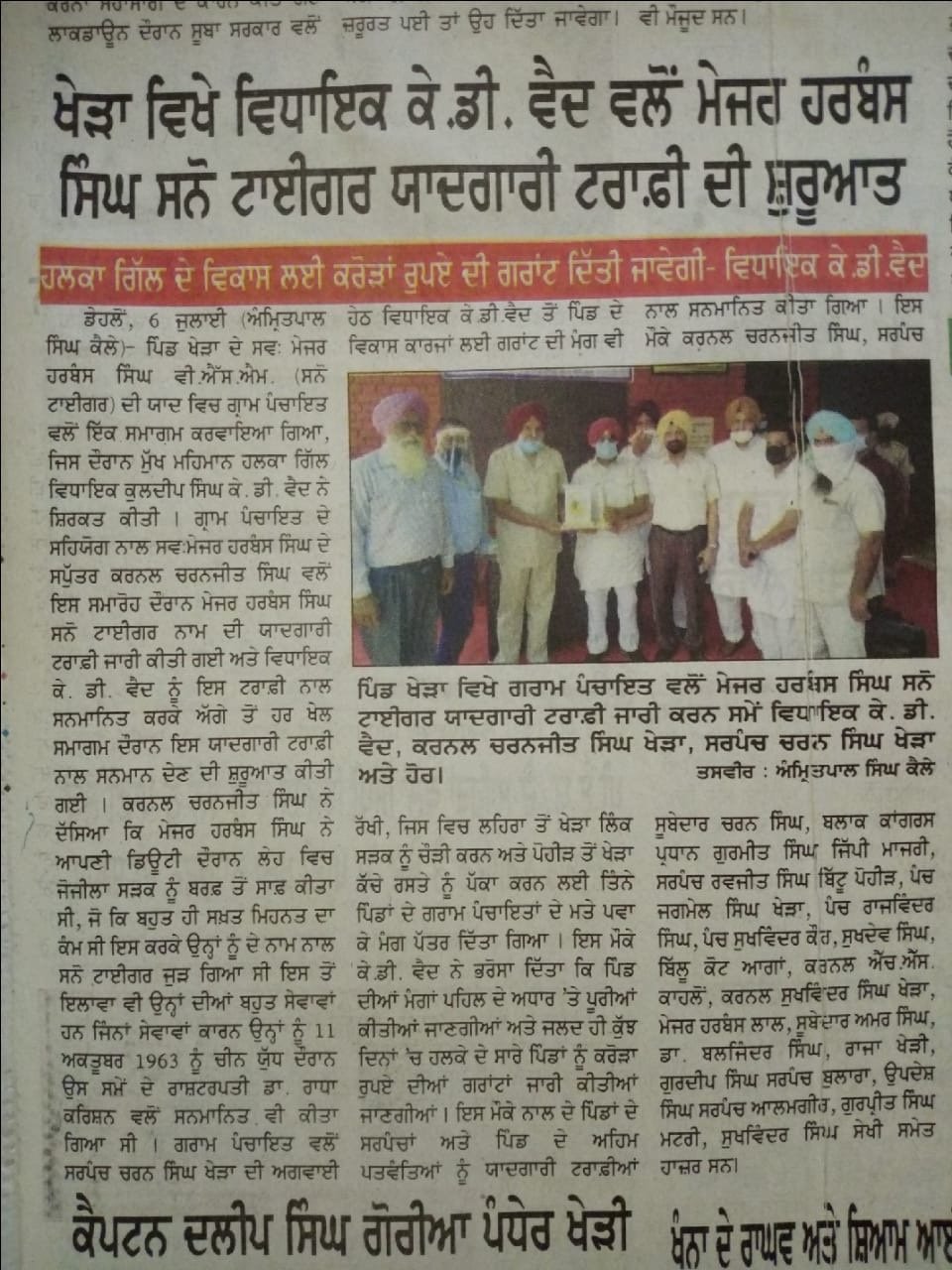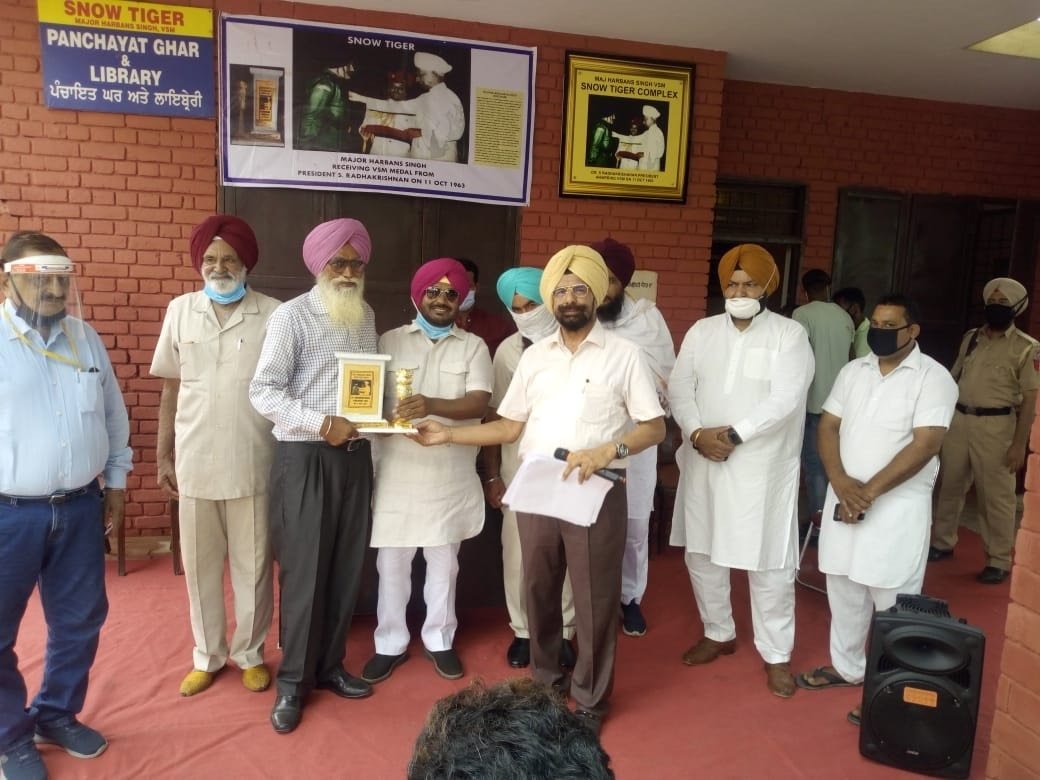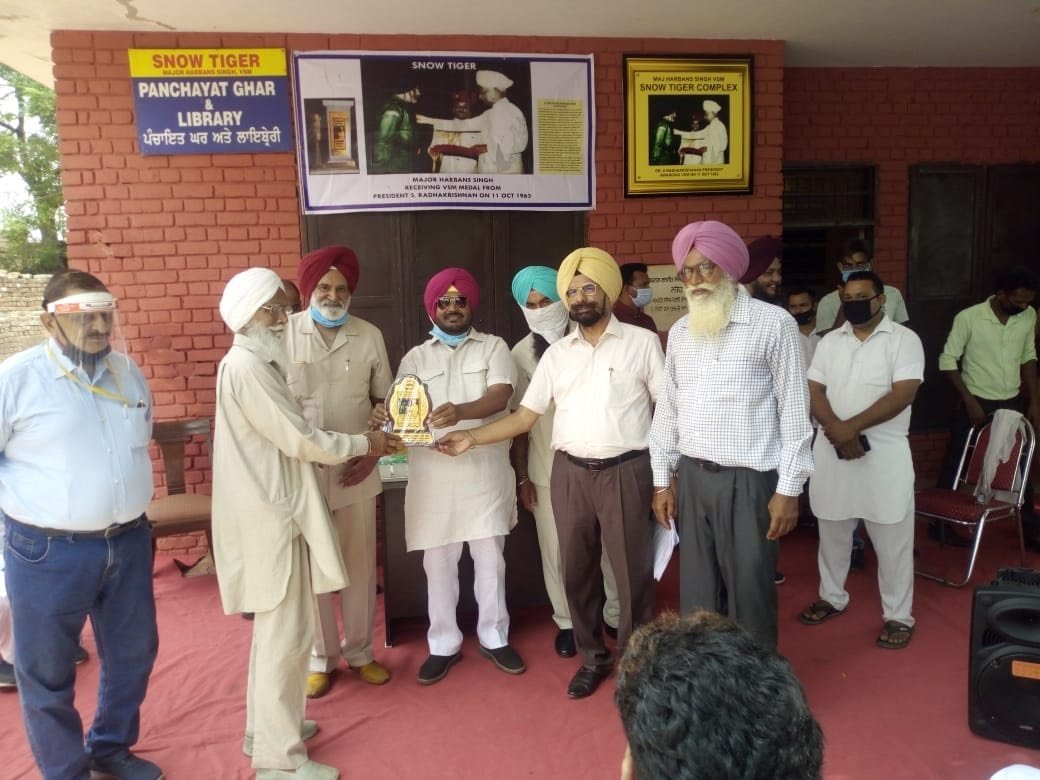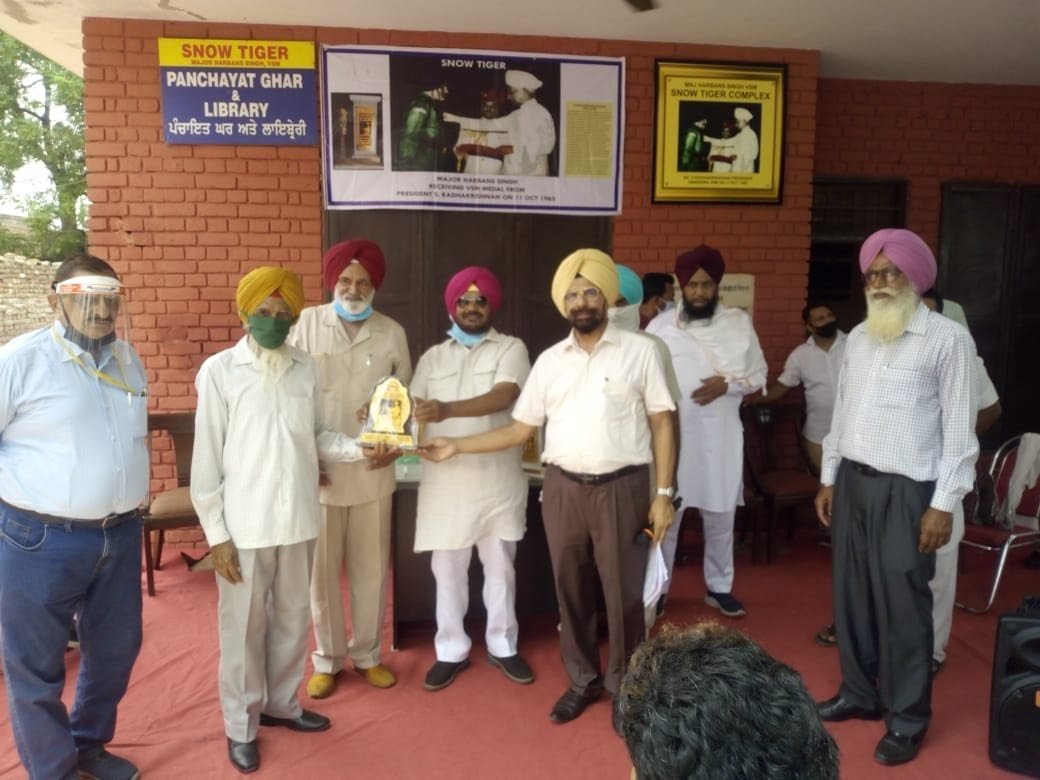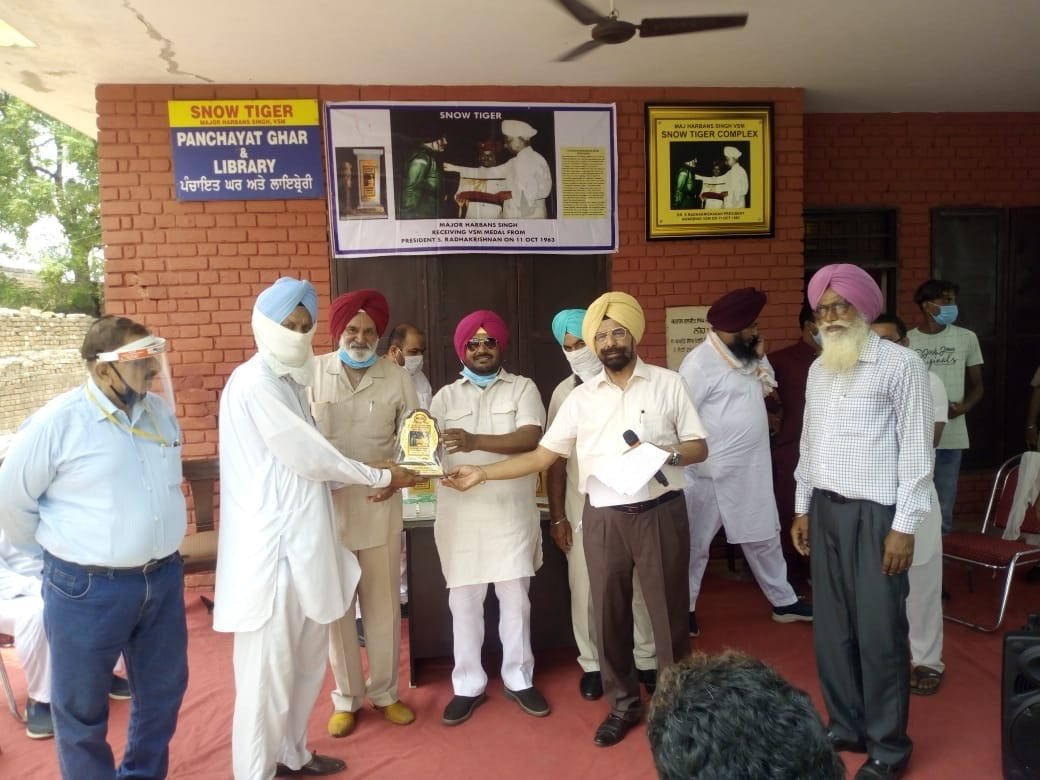
Sometimes history has unsung heroes whose valour and sacrifice go unnoticed because there was none to record it or publicise it. Sometimes, rarely, such valour and sacrifice are well known and documented, but it is embarrassing to sing praise, acknowledge or put the spot light of publicity on them. The story of Maj Bob Ranenglao Khathing MC, OBE, of the Indian army, is one such aberration. He was the man who surreptitiously went and annexed Arunachal Pradesh to India back in 1951 Like the Henderson Report, the real story of 62 war with China, the story of Maj Khathing remains buried in the Def Sec’s cupboard in spite of parliamentary intervention and RTI. It remains hidden from public view even after 50 yrs, though Indian Official Secrets act has a lifespan of only 30 yrs. It is politically expedient for the Govt Of India to erase Maj Khathing from all records that show that such a man ever existed. The right person who can corroborate this story is probably the venerable ‘Dalai Lama’, but even he has too much at stake to say anything that embarrasses GOI.
I did not invent this story and I do not know its veracity personally because I was only 2 yrs old when it happened. I have simply, and rather shamelessly, reinvented and plagiarised it from a story filed by Yambem Laba , a news paper man from the northeast, because I believe it is true. It has some relevance to another story that I am writing for you, about a fictional futuristic Sino Indian war, rather long story compared to my other stories on this blog. My ever increasing brood of fans are demanding stories faster than I can write them. Hence this story is being putout to buy myself time to finish my other fictional war story, about the same kind of ‘Dogs Of War’
To tell the story of Maj Khathing, and highlight his relevance in Indian history in the immediate aftermath of independence, it is necessary for me to first highlight the circumstances that led to the military defeat of Indian army in the Sino Indian war of 1962. Let me start this story from the British colonial India at the turn of the 20th C. Here we go.
In 1903, alarmed by the Chinese and Russian influence in Tibet, Col Francis Younghusband of the British army led a military expedition to subdue Thubten Gyatso, the 13th Dalai Lama (predecessor of the current one Tenzin Gyatso ). Thubten ran off to China and took asylum there. It took quite a while, and a lot of manoeuvring, for the British to tame Thubten. In 1914 Henry McMahon, the then British foreign secretary, finally managed to get Thubten’s envoy into Shimla to sign a free trade agreement between Tibet and British India. As part of the agreement, they also signed a treaty demarcating the southern boundary of Tibet. Since the Himalayas were unchartered, unmapped and rather unhappy territory, McMahon did the only thing that was practical and pragmatic. He took a pencil and drew simple line on a map, connecting all the highest peaks, the water shed, the northern slopes of which were to be in Tibet and the southern ones in British India. Even at that time, this line, the watershed, was neither acceptable to man, Yaks, Yeti, 13thDalai Lama, nor Col Younghusband as a practical, defensible, geopolitical border. However, at that time, this was not considered strategically or militarily important, or an issue, considering the greater cause and benefits to one sided, parochial, British interest in trade and commerce.
The border between British India and Tibet at that time (Shimla agreement in 1914) had three buffer Kingdoms, all of them simple monarchies propped up by treaties with British India. Nepal was ruled by the Ranas, Sikkim by the Chogyals and Bhutan by the Wangchuks. Eastwards from Bhutan lay the large 61,000 sq km stretch of sparsely populated and utterly inhospitable never never land, the barren mountains and jungles beyond any man’s ambition and aspiration. In those days it did not even have a name, at best it was referred to by the British as the ‘Dirang Dzong of Twang’ (it became North East Frontier Agency or NEFA, only in 1954 and Arunachal Pradesh recently in 1986).
I am told that ‘Dzong’ in Tibetan means a fort. I am also told that in those days such forts had a small military or police contingent of sorts to up keep law and order as also collect taxes in kind, and favours from local women. The master of such a Dzong was a ‘Dzongpen’, or a magistrate, with selected Lamas who helped administer the territory under the Dzong, called ‘Dirang Dzong’. The Dzongpen of Tawang owed allegiance to the quasi political and religious leader, the Dalai Lama at Lhasa. Prior to 1951, Aksai Chin, Leh, NEFA (Arunachal) were all Dirang Dzong that were administered by their respective Dzongpen as Tibetan territory with absolutely no allegiance or recognition of Delhi, either British or Indian. So the relevance of the McMahon line was mostly to do with the border along the northern Aksai Chin and Leh area, and the north eastern NEFA, all of which, tactically speaking, was a non contentious no man’s land during the colonial past. It was the land of the Lamas, Yaks and Yetis, all of them of little interest to the men of the early 20th C.
It became contentious half a century later, around 1950-51, when China occupied Tibet and the 14th (Current) Dalai Lama Tenzin Gyatso ran off from Lhasa and took political asylum in a newly independent India. A pro Chinese interim govt was installed in Lhasa. It became necessary for the politically naive, rather new Govt Of India to have a militarily defensible border with the Chinese occupied Tibet, especially keeping in mind India’s then foreign policy of abetment of Tibetan aspirations. The border became a bone of contention around 1958 – 60 period as a result of several clashes between Chinese and Indian army patrols to jockey and occupy mountain passes in the Himlayas that controlled thriving trade route between Tibet and India at several places. To give the Chinese due credit, the then Chinese Premier, Chow En Lai, wrote many letters to Nehru to try and resolve the problems amicably. However, Nehru, though wise and sagacious in so many ways, was besotted by his own rising unpopularity in parliament as well as the political brinkmanship strategies of the inflexible and highly autocratic Def Min, VK Krishna Menon, who was probably perceived by Nehru as his mentor and saviour. India refused to give any importance to the Chow En Lai letters. Chow En Lai then came to India in 1962 with an unusually large 135 member trade and military delegation, armed with trade concessions, historical maps as well as records to prove rightful borders of Tibet (specially Aksai Chin and NEFA). The trade concessions were olive branches sticking out of the barrel of a gun. The GOI did not notice this. The delegation returned to China empty handed. Krishna Menon ordered the Indian army to do forward posturing. The 1962 war was triggered by Indian army incursion at Namka Chu, an east-west stream which separates the Thag La and the Hathung La ridge, and at Se La pass, north of Tawang. But I am jumping the gun, this is a success story, not one of defeat and humiliation. It is the story of Maj Khathing who captured Tawang in 1951, around the time that the Chinese were occupying Tibet.
Ranenglao Khathing was born on 28 Feb 1912 in Manipur’s Ukhrul district. He was a Tangkhul Naga. The Christian missionaries had a profound influence on his psyche and one of them adopted him as their son. He studied at Sir Johnstone High School in Imphal, did his matriculation (10th) from Shillong and joined Cotton College in Guwahati. When he failed to clear his BA examinations in 1936, he was determined not to return home until he had obtained a degree. So he went to Harasingha in Assam’s Darrang district and founded a school where he also taught. A year later, after he had managed to graduate, a family friend SJ Duncan, who was then the British sub divisional magistrate of Ukhrul, convinced him to leave the Harasingha school and return to Ukhrul High School as it’s Head Master. In 1939 when WW-II precipitated worldwide mobilisation, 27 yr old Khathing immediately enrolled in the British army and was sent to the Officer’s Training School in Dehra Dun.
Commissioned into the 9/11 Hyderabad Regiment (now Kumaon Rgt), he had Thimaya (later General) as his company commander and TN Raina (later COAS) as fellow subaltern. In 1942 Khathing was transferred to the Assam Regiment in Shillong and became a captain. He was soon attached to the USAAF contingent at Jorhat for the ‘Hump Lift’ as a logistic liaison officer. ‘I am Capt Ranenglao Khathing’, he would introduce himself. It was too much for the Americans to mouth. ‘Yes Bob’, they would respond. Soon Capt Ranenglao Khathing morphed into ‘Capt Simply Bob’.
After the Japanese blocked the Burma road, the British army formed a guerrilla outfit called Victor Force (an earlier version and subsequent role model for Col Wingate’s Chindits) using the missionary educated tribals of Nagaland. Their task was to use topography and the jungles as their cover, live off the land and operate 100 to 150 miles deep inside the enemy territory to interdict the Japanese supply and communication lines, to inflict heavy causalities on the enemy and to act as a screen for then retreating British army from Burma. Capt ‘Simply Bob’ was sent to command this V-Force group in the Ukhrul area. He shed his army tunic, shaved his head like a typical Tangkhul tribesman with a thick mane running down the middle of his scalp, Mohawk style. On his back he carried a basket with dried salted meat and concealed his gun in his Tangkhul shawl. It is believed that while in command of Victor Force in 1942-44 period, he personally killed some 120 Japanese soldiers and played shindig with the Japanese, hit and run kind of war, living off the land and never surfacing anywhere, totally cut off from friend and foe. After the war was over, for his exemplary sacrifice and valour, he was awarded the Military Cross and made a Member of the British Empire.
After the World War, around 1945-46, Maj Bob was demobilised along with a large number of short-service emergency commissioned officers. Immediately afterwards, on request of then Maharaja ‘Kumar Priyabrata Singh’, he went to Manipur and joined the then interim government as minister in charge of the hill areas. In 1949, when Manipur merged with India, the interim government was dissolved and Bob found himself at loose ends. Soon Sir Akbar Hydari, then Assam governor, asked him to rejoin the Assam Rifles as a stopgap measure. He then served with the 2nd Assam Rifles Battalion for two years in Sadiya. In 1951 he was inducted into the IF AS (Indian Frontier Administrative Service) as an assistant political officer.
One day he was summoned by the new Assam Governor, Jairamdas Daulatram.
‘Bob, do you know where is Tawang ?, Jairamdas asked him.
‘No Sir’, Bob answered truthfully.
The Governor took him to a ‘Globe’ on his desk and pointed out Tawang. ‘This is the kingdom of the Dzongpen of Tawang’, he traced his finger over the incredible 61,000 sq km waste land that lay north of Tezpur stretching eastwards from Bhutan, all the way to Mon tribal area of Nagaland that Bob was familiar with. ‘He who controls Tawang shall control the far east’, Jairamdas predicted. ‘Do you think the Chinese should control it ?’.
‘No Sir’, Bob repeated.
‘What would take you to mount an expedition to Tawang and bring the Dzongpen under Indian political control, and to annex the region to the Union of India ?, the governor came straight to the point.
‘Sir, I am no longer in the army, I am now simply an assistant political officer, an Iff Ass’, he said with visible sadness. ‘I do not have the authority to do this’.
‘I am all the authority that you need, though neither the centre nor I have the ability to get the C-in-C Roy Boucher to agree to a military expedition for this task. At least not quickly enough to do it before the Chinese react’, Jairamdas mulled, running his hands over his bald head. ‘We need someone to do it quietly. Keeping in mind your war record, I cannot think of a better man to do it than you’.
‘I will do it’, Bob answered simply. ‘But I need an expeditionary force, about 200 hundred fully armed troops, mountaineering equipment as well as mules and porters to carry the equipment, a doctor and medical stores.
‘Sure’, answered Jairamdas. ‘Go, think it over. Send me the list of what you need and when you can start, the sooner the better’.
Bob did not think or procrastinate. He simply walked out of the Governer’s office, went to his PA’s office next door and dictated two simple letters to be typed on the letter head of the Govt Of India with the prominent Sarnath Lions in the top left corner. The letters were addressed ‘To Whomsoever It May Concern’. The first letter, with a heading ‘SECRET’, said that the Governor of Assam, on behalf of the newly formed ‘Republic Of India’, has ordered Maj Ranenglao Khathing (Rtd) to rejoin the Indian army, raise an armed expeditionary force, make war if necessary, and annex the Kingdom of the Dzongpen of Tawang with the Union Of India, as soon as possible. In the second letter, with the heading ‘UN CLASSIFIED’, the Governor authorised Maj Ranenglao Khathing, a serving officer of 2nd Assam Rifles, to collect Rs 25,000 from the treasury and requisition any stores or personnel he felt necessary for a mountaineering expedition in eastern India. He concluded the second letter making himself accountable, that he was subject to expenditure accounting at the end of the expedition. He took both the letters to the Governor for his signature and the then ubiquitous red wax seal of authority.
He asked the Governor for two months to conclude the operation. The Governor gave him 45 days to do it. Once again Bob walked into the PA’s office and dictated several telegrams, using Jairamdas’s name.
The first telegram was to his old unit, the 2nd Battalion of the Assam Rifles Regiment, still at Sadiya, near Barrackpore, near Calcutta. The message simply said, ‘Mobilise forthwith two companies with light weapons, ammo and stores to Tezpur. Requisition train resource and complete move with urgency. Capt Hem Bahadur Limbu from 5 AR to be in-charge of the move. Capt Modiero (doctor) and five physically fit medical orderlies to accompany troops with adequate medical and surgical stores. The troops to report to, and be under command of, Maj Khathing, reinstated forthwith to AR as Major’.
The second telegram was to Bata Company in Calcutta, requesting a special order for 1000 pair of fleece lined leather mountaineering shoes, to be shipped to Tezpur by chartered aircraft urgently, payment to be made in advance from treasury against an invoice’.
The third telegram was to the cartographers at the ‘Geographical Society Of India’ also at Calcutta, to urgently forward to the Governor’s office, ten sets of large scale relief maps of area north of Tezpur, whatever was available.
The fourth telegram was to Benny & Sons, Canned Food Suppliers, once again at Calcutta to immediately accept an urgent delivery order for canned Luncheon Meat, Sausages and Mackerel, each ten thousand tins, to be handed over to Captain Hem Bahadur Limbu at Sadiya. Payment to be made in advance from treasury against an invoice’. Bob chuckled when the PA looked up from the type writer with a perplexed look. ‘Look my good man’, he said amicably. ‘If we have to march up the mountains all day, we may as well sleep on a full stomach. Moreover, I have had more than enough of living off the land in Victor Force’.
His last telegram was to the Army Supply Park at Dhimapur. ‘Requisition thousand sets of Parkha or Irwing jackets, socks and other articles of warm clothing. Await instructions from Maj Khathing of 2 AR, scheduled to arrive your location in two days’.
When he finally arrived there at Dhimapur, all he could find was brown US Army issue Angola shirts, which he accepted though they were all of awkward sizes. On a spur of the moment brainwave, he travelled to Chabua and Dinjan where the USAAF had left behind large metal containers of stores when they withdrew their operations of the ‘Hump Lift’ from Chabua and Ledo six years earlier. There were hundreds of containers kept in safe custody of the Army and Air Force. When he broke open these containers, he found camping gear, tents, Irwing Jackets, woollen gloves and socks, inners, just about everything that he wanted for equipping his expeditionary force into the cold wasteland of the Himalayas. He got them repacked into four of the same containers and had them transported to Tinsukhia railway station, from where he sent them to Tezpur via Guwahati since that was the only road and rail crossing across the wide Brahmaputra river. Afterwards he caught a routine ferry from Dibrugarh to Majauli island and crossed over to the north bank of the river on elephant back. Once across the river, he requisitioned an old war surplus jeep from a British tea planter and drove down tea plantation tracks and back roads to Tezpur, arriving several days before the men and material arrived there from all quarters. At Tezpur he made arrangements for around two hundred mules and donkeys, 400 odd porters from the plains, and another two hundred from the hills. He also requisitioned ten odd tailors and cobblers to go with them on the expedition with their tools of the trade. A mountain of food supplies, mostly rice, flour and condiments, kerosene jerry cans, he procured locally. As the men and material arrived, he moved his base camp to a large clearing at Lokra, about twenty km north of Tezpur town.
For three weeks he drilled his men and took them on long endurance runs, carried out rifle shooting practice and formed them into a tough bunch with high morale and camaraderie. He formed small teams of porters, each hundred men, in change of a Naik of the AR, and sent them with the men and animal ported packed stores in relays to establish forward camps. He also sent scouts towards Tawang to not only reconnoitre easy mountain trails to Tawang, but also gather intelligence.
Due to the sudden nature of Bob’s activities and flashing of the unusual authorisation letter, the expedition came to the notice of Major TC Allen, the last British political and intelligence officer of the east, based in Dibrugarh. He followed Bob to Tezpur to enquire into whatever that was happening and met up with him at Lokra. Though Bob received him cordially, he gave Allen a Hobsons’s choice. Either come with him to Tawang or be quarantined at close arrest under guard at Lokra till the expedition was over. Allen, a keen mountaineer, chose the former and applied himself with zest as Bob’s second in command, thereby making it a strange indirect ‘Anglo Indian’ expedition
The expedition started out from Lokra on 17 Jan 1951, with 200 soldiers under full pack with arms and ammunition. There were no regular roads or bridges over the rivers and streams, one had to just walk cross country. Because of physical toughening of troops and staging of camps twenty to twenty five km apart over inhospitable terrain with just goat tracks, Bob was able to move his expeditionary force at great speed. However, he allowed the men from the plains to acclimatise to altitude by stopping a day every three days of march. Within nine days they were able to reach the Dzong at Bomdila, the first frontier post of Tibet then commanded by Katuk Lama, an assistant political agent. Bob camped right at the closed gates of the Dzong. The next day, on 26th Jan he hoisted the Indian flag in front of the Dzong and invited all the inhabitants to a feast. The Governor sent a Dakota from Guwahati to reconnoitre Bob’s progress. The aeroplane flew low over the monastery and while the soldiers waved, it did several rounds of the monastery. The show of force was enough to convince Katuk Lama that an invasion was in progress. He urgently despatched runners to warn all Dzongs towards Tawang.
After three days rest and recuperation, as also time for the hill porters of his retinue to catch up, Bob moved out once again on 1st Feb 51 to Chakpurpu and Senge Dzong at the base of the Sela Pass. The five mile climb to Sela Pass sapped their energy and wits. Undaunted, they moved further up the mountain to Nauranang. On 4 February, they camped at Jang village. Two locals and some troopers were sent out by Bob to collect information and to gauge the feelings of the local people towards their expedition and to invite them for another feast. The next day, the headmen and elders of Rho Changda and the surrounding villages of Jang visited Bob. Through an interpreter Bob explained the purpose of his visit and advised them not to pay obeisance to the Tsona Dzongpens, that they were now free citizens of the Union Of India. To the exceptionally primitive tribals in such isolated and far flung land, the concept of freedom and democracy were as alien as the back side of the moon. However they understood that a new conqueror ‘Bob’ had come to rule them. Bob then detached Capt Limbu, Sub Bir Bahadur and Jam Udaibir Gurung, tasking them to scout around the Sela Tract to find a militarily defensible site and to construct a permanent check post and barracks to establish an Indian frontier post. He left behind some of his troops as well as porters and advised Limbu to take the help of the local tribals to carry out his task.
Bob moved his task force further forward. On 6 February they camped at Gyankar and Tibetan representatives of the Dzongpen of Lhau came down hill to meet them. They brought presents and offered Bob incentives in gold and women if he would go back. Bob simply smiled and welcomed them as fellow citizens of a new country to enjoy a new found freedom. Next day was the Tibetan New Year or Lhosar, the first day of the Year of the Iron Horse. In the evening it snowed heavily and the weather turned extremely cold. However, the entire expeditionary force including the porters were snug and warm in American war surplus clothing due to Bob’s foresight and good sense .
Bob and the expeditionary force reached Tawang on 7 Feb 51. They spent two days scouting the area for a permanent site where both civil and military lines could be laid out with sufficient area for a playground. A place was chosen north-east of Tawang Monastery and he camped his force at this location. He put his soldiers and porters to work building a semi permanent military camp with wooden logs and stones. He then sent emissaries to the Dzongpen for cordial meetings and to arrange an instrument of accession to the Union Of India. For two days there was no reciprocity or goodwill. The small population remained indoors.
After three days, Bob got impatient. That night he ordered his men to fire 20 rounds of two inch mortar at the hill sides and fire off 1000 rounds of 303 ammo in the air. In the closed confines of the mountain, on a dark and silent night, the fireworks sounded like frightening thunder claps, echoing and reverberating, one placating message after another. The voice of God. In the morning he lined up his troops, fixed bayonets and marched his troops up and down Twang for four hours. He also planted the Indian Flag in front of the Monastery. This had the desired effect and the next morning the Dzongpen sent emissaries. Bob put Maj Allen of the British army on the job to negotiate armistice and to draw up a parchment for the formal accession.
There were endless long winded negotiations. The emissaries were told that the Tsona Dzongpens or any representatives of the Tibetan government could no longer exercise any power over the people living south of the Bumla range. Obviously the emissaries had many objections to such a preposterous proposition.
On 11 Feb Bob made a courtesy call on the Abbot of the Tawang monastery. He gifted the Abbot with a hand wound gramophone and two Beethoven 33 rpm records. The Abbot had never seen such an invention and after the initial fear he instantly took a shine to ‘Music of Budha’. Bob then presented other monks with knickknacks from his camp, American warm clothing, several Tiffin carriers, back pack, tinned food, a bugle. He requested them for their assistance to advise and to influence the local people to acknowledge and accept the accession to the Union Of India. No taxes were to be imposed, women were to be treated with respect. He told them of the withdrawal of the British from India. He sold them the concept of freedom and the new found aspirations of the people of India. The rural rustic monks found Bob a more pleasant and sagacious King to have than the autocratic Dzongpens.
After two days, on 13th Feb, because Allen was making no headway, he sent out patrols to round up the Chhgergans (officials) of the 11 Tsos or Tibetan Administrative Units and to bring them into the camp. If they did not come voluntarily, he ordered that they were to be brought by force. For several days afterwards they were wined and dined with great hospitality and respect, Bob issued a general order that they were henceforth not to accept the suzerainty of the Dzongpens or Drekhong, or pay tax or tribute to them.
Finally around the 19th or 20th of Feb, Bob ran out of patience. He was also running out of the time that the Governor had given to him. Along with Allen, the Chhgergans and a hundred troops, he marched directly to the palace of Nyertsang, the Dzongpen of Tawang. He did not meet with any resistance and there was no violence of any kind. All proceedings were done with traditional cordiality and respect.
Nyertsang laboured and stalled for time, to seek advice and guidance from Tibetan government in Lhasa.
‘What Govt ?’, Bob interjected. ‘The Chinese army has invaded Tibet’.
‘You ever heard of Col Younghusband ?’, Allen asked Nyertsang. ‘There is a treaty with the Govt of Tibet, and as per that treaty the area south of the watershed, south of the McMahon line, it is in India, not Tibet. Tawang is part of India. You really have no business here’, he said.
Because of his awkwardness in sitting on the cushions placed on the ground, and because his pistol butt was poking his hip, Allen suddenly took out his Smith & Wesson pistol and placed it on the ground in front of him.
Nyertsang’s visage fell, he deflated like an air pillow.
Allen took out the parchment from his map case and the treaty of accession to the Union Of India was signed by Nyertsang without much ado. Under the powers vested on him by the Governor of Assam, Maj Bob Ranenglao Khathing MC, OBE, signed the treaty on behalf of the Republic Of India. As a token of appreciation, a ‘Nazrana’, of 1000 Rupees was paid to Nyertsang. Allen named the Kingdom of the Dzongpen of Tawang, as the ‘North East Frontier Agency’ (NEFA). Bob appointed Allen as a Lieutenant Governor, accountable to the Governor of Assam, to administer the kingdom till GOI could send their representatives. A quarter-guard was established at the Dzongpen’s treasury using AR troops and Allen set out to document all cash and treasure, besides other administrative tasks of governance. Allen was the first ‘Nawab of Nefa’, albeit white.
After the accession ceremony, Bob had a final task to do, to go back to the Governor and inform him that he had carried out his duty, to every one’s satisfaction, without firing a shot (except for the fire works for entertainment). So he set out downhill to Tezpur with a small retinue leaving the expeditionary force in charge of Allen. The Governor sent a Dakota to pick him up from Tezpur and they flew to Delhi and went to see the Prime Minister, Nehru.
Nehru was livid, ‘Who asked you to do this?’, he vented his anger at the Governor. ‘I wish you had the good sense to consult me before you commissioned this colossal stupidity. Do you have any idea how much trouble I am having with Chow En Lai over Tibet?’, he mourned. ‘I want a complete black out on this incident’, he ordered the PMO. ‘I want the PTI to put the lid over this, and not blabber about it’.
‘And you’, he pointed an accusing finger at Bob. ‘Please get lost, don’t ever talk about it’.
Bob and Jairamdas walked out of the PMO dejected.
It took Nehru another four years of tough negotiations with Chow En Lai to come to terms and sign an eight year agreement over Tibet and form the first ‘Sino Indian Pact’. Only in Apr 1954, after the pact, did GOI publically announced it’s suzerainty over NEFA and appoint an Indian overseer team in NEFA to replace Allen and his merry men from 2 AR. The new Indian team was from the Special Intelligence Bureau, none from the prestigious newly formed IAS ever wanted to go and live in this god forsaken land . NEFA finally became an Indian state, renamed ‘Arunachal’, the land of the rising sun, only in 1986. It was to have a brand new capital, to be built out of the blue at Itanagar, a pasture in the foot hills. Tawang was too much of a bother for both the new found politicals, as well as IAS in NEFA.
Afterwards Bob simply disappeared amongst the vast multitude of India, faceless and without an identity. He was to go back to Tawang only in 1986, for the statehood celebrations. His visit was private and unrecognised. A 74 yr old man’s personal trip down memory lane. None recognised or remembered Bob. Like all old and bold soldiers, he did not die, he simply passed away, having done his duty well.
In 1966, when I joined NDA, my Divisional Officer in Foxtrot Sqn was a nephew of Bob, the same kind of man, with the same genes, simply an incredible, resilient, unstoppable, hard core soldier. The first ten years of my own soldiering was in that area, the god forsaken country in the far-east. One soldier to another, three cheers, ‘Long live Maj Bob Ranenglao Khathing MC, OBE, hip hip ………….














